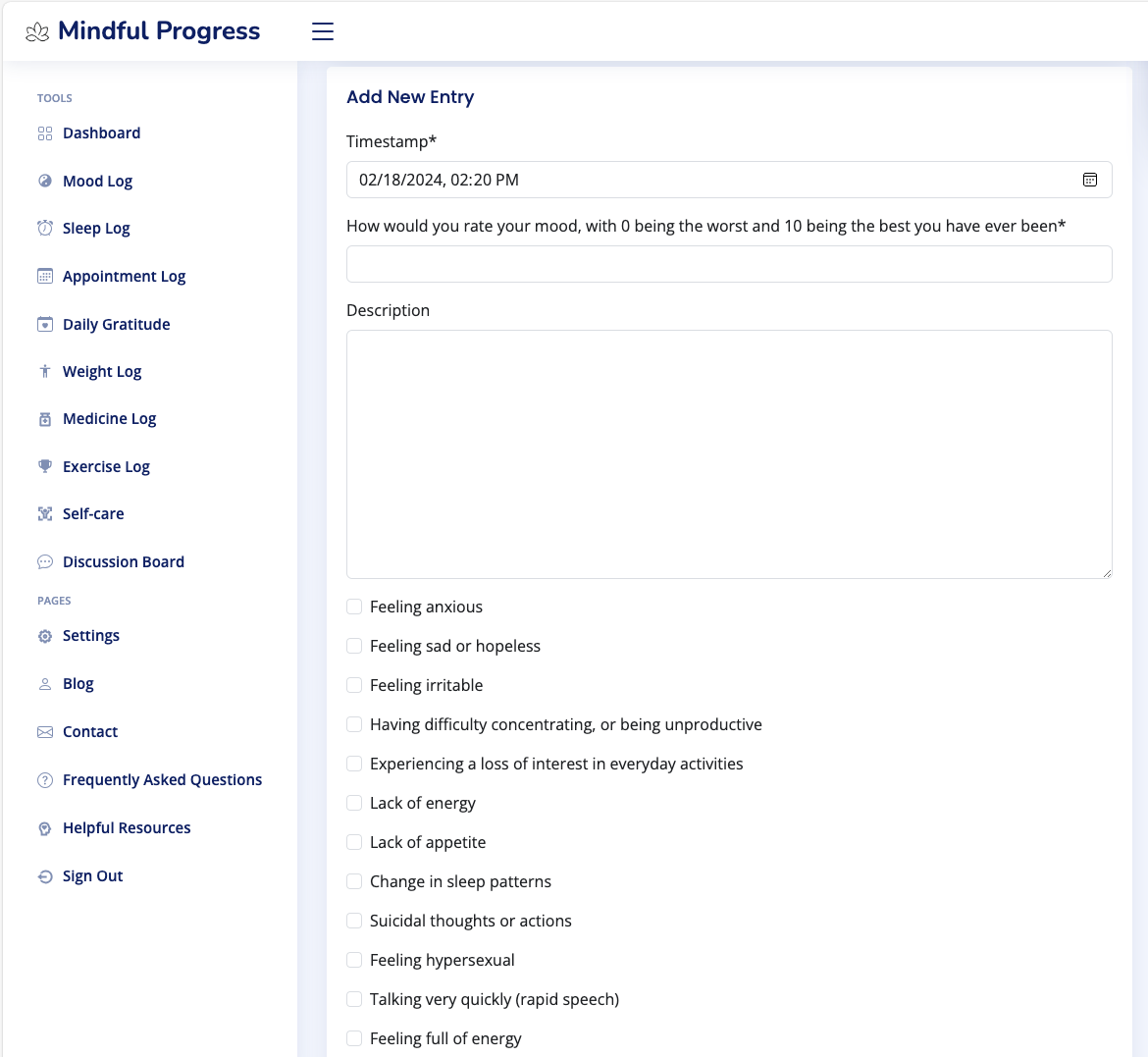
What is a Mood Journal?
A mood journal, also known as a feeling journal or mood tracker, is a tool used to record a person’s mood at regular intervals. The number of times a day you record your mood can vary. If you are experiencing stability, you may only log once a day. If you are experiencing an episode of depression, mania, or rapid cycling it will be imperative to log more frequently to keep good records for yourself and as an aid in your next appointment.
- Purpose: The primary purpose of a mood journal is to identify patterns in how moods vary over time and due to different situations and circumstances. It helps in understanding how certain events and situations affect your feelings.
- Usage: Mood journaling involves logging your mood, identifying what caused it, what resulted from it, and whether it was contextually appropriate. It’s not just about recording the positive aspects of your day, but also what made you feel negative.
- Benefits: Mood journals can be particularly useful for people with mental health conditions, such as depression and anxiety, to help identify and regulate moods. However, they can be beneficial for anyone, especially if you’ve noticed a recent change in your mood.
- Formats: Mood journals can range from simple handwritten journals to online apps such as Mindful Progress (https://www.mindfulprogress.org/) that collect a range of information. They are often used in therapy as a way of keeping track of thoughts, feelings, moods, and behaviors during treatment and between sessions.
In essence, a mood journal is a personal space to express all your thoughts, feelings, and actions in a creative and cathartic way. It provides a clear picture of what affects your mood over time.
Why You Should Track Your Mood
Tracking your mood helps you see patterns and may also help illuminate the effect of certain triggers on your mood. This is helpful for your own personal reasons but can also be beneficial when talking with healthcare providers. With Mindful Progress, you see a graph of your mood over time which makes it visually easy to see how stable things have or have not been. These graphs can be saved and sent to your provider for more fruitful conversations.
How To Track Your Mood
Create an account on this website to begin tracking your mood, sleep, and other factors that go into wellbeing. Having your Mood Log online allows you to enter new entries from any device and will not be lost like a paper journal.
Step 1: Go to the Mood Log menu item after signing in.
Mood Log - Mindful Progress. You will see a graph of your recent mood entries, with the start date of any medications called out. It is helpful to see when medications start to see how long they take to give you benefit.

Step 2: Add New Entry
Below the graph you will see the area to add a new mood entry. You will be able to rate your mood 0 (sad) to 10 (beyond happy). You will also be able to diary your thoughts about your mood as you log it and select any of the common symptoms people experience. The mood description is your opportunity to explain the context behind the mood rating. Over time, the website will show you common terms that come up in these descriptions to identify trends or triggers.

Click Add Entry and you have done it!
Your mood journal is both private to you, but also a great ally when discussing how you have fared since your last appointment. Mindful Progress gives you a secure, private place to record mood over time and identify trends and triggers that will lead you to wellness.